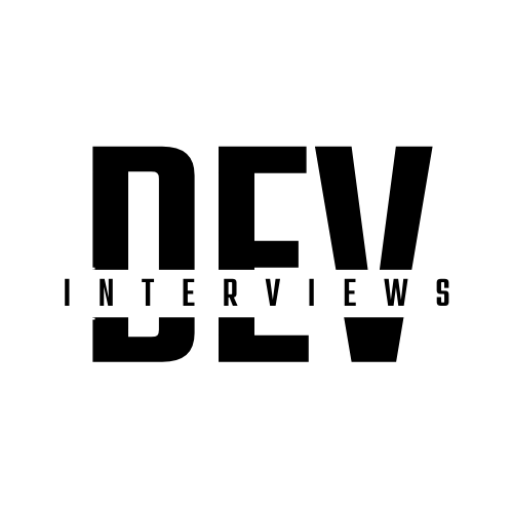Angular is a powerful front-end framework widely used to create scalable web applications. Preparing for an Angular interview requires a solid understanding of its core concepts and advanced features. Below are 30 essential Angular interview questions and answers, categorized into basic, intermediate, and advanced levels.
Basic Questions and Answers
-
1. What is Angular?
Angular is a TypeScript-based open-source front-end framework developed by Google for building single-page applications (SPAs). It features a component-based architecture, modular structure, and tools like RxJS for reactive programming.
-
2. What are Angular’s key features?
Key features include:
- Component-based architecture
- Two-way data binding
- Dependency Injection
- RxJS for managing asynchronous operations
- Modular development
-
3. What is the difference between AngularJS and Angular?
AngularJS is the original version, built on JavaScript with an MVC architecture. Angular (from version 2 onwards) is a complete rewrite, based on TypeScript, and uses a component-based architecture with better performance and modularity.
-
4. What is a component in Angular?
A component is a building block of an Angular application. It manages a specific part of the user interface and is defined using the
@Componentdecorator. -
5. What are modules in Angular?
Modules group related components, directives, pipes, and services. The root module is
AppModule. Modules help organize the application and enable features like lazy loading. -
6. What is two-way data binding?
Two-way data binding synchronizes data between the model and the view. It is implemented using
[(ngModel)]:<input [(ngModel)]="data"> -
7. What is the purpose of the Angular CLI?
The Angular CLI (Command Line Interface) simplifies project creation, configuration, and management. It automates tasks like creating components, services, and building the application.
-
8. What are directives in Angular?
Directives add behavior to elements in the DOM. They are classified into three types:
- Component Directives: Manage templates.
- Structural Directives: Alter the DOM structure (e.g.,
*ngIf,*ngFor). - Attribute Directives: Change the appearance or behavior of an element (e.g.,
[ngStyle]).
-
9. What is TypeScript, and why is it used in Angular?
TypeScript is a superset of JavaScript that adds static typing and modern ES6+ features. Angular uses TypeScript to improve code maintainability, detect errors at compile time, and enable advanced tooling.
-
10. What is the purpose of the
angular.jsonfile?The
angular.jsonfile contains configuration for the Angular project, including build options, file paths, and project structure.
Intermediate Questions and Answers
-
11. What is RxJS, and how is it used in Angular?
RxJS (Reactive Extensions for JavaScript) is a library for handling asynchronous data streams using observables. Angular uses RxJS for managing events, HTTP requests, and other reactive operations.
-
12. What is Dependency Injection in Angular?
Dependency Injection (DI) is a design pattern where objects are provided their dependencies externally. Angular’s DI system allows services to be injected into components or other services.
-
13. What is the difference between template-driven and reactive forms?
- Template-driven forms: Use directives like
ngModelin HTML templates. Suitable for simple use cases. - Reactive forms: Use a model-driven approach with
FormControlandFormGroup. More scalable and testable.
- Template-driven forms: Use directives like
-
14. What is lazy loading in Angular?
Lazy loading delays loading a module until it is needed, reducing the initial load time. It is implemented using the
loadChildrenproperty in route configurations. -
15. What are pipes in Angular?
Pipes are used to transform data in templates. Built-in pipes include
uppercase,currency, anddate. Custom pipes can be created with the@Pipedecorator. -
16. How does routing work in Angular?
Angular’s Router enables navigation between components. Routes are configured in a module using
RouterModuleand a set ofRoutedefinitions. -
17. What is ViewChild in Angular?
@ViewChildis a decorator used to get a reference to a child component, directive, or DOM element in the parent component. -
18. What is the purpose of resolvers in Angular?
Resolvers fetch data before a route is activated. They ensure that required data is available before rendering the component.
-
19. How do you manage state in Angular?
State management can be handled using services, RxJS, or third-party libraries like NgRx, which implement a Redux-like pattern.
-
20. What are route guards in Angular?
Route guards restrict or control access to routes. Types include:
CanActivateCanActivateChildCanDeactivateResolve
Advanced Questions and Answers
-
21. What is Change Detection in Angular?
Change Detection is the mechanism by which Angular checks for changes in component data and updates the DOM accordingly.
-
22. What is the difference between Default and OnPush Change Detection Strategies?
- Default: Checks all components for changes.
- OnPush: Checks only when input properties change, optimizing performance.
-
23. What is Angular Universal?
Angular Universal enables server-side rendering (SSR) of Angular applications, improving SEO and initial load time.
-
24. How do you implement dynamic components in Angular?
Use
ComponentFactoryResolverto create and inject components dynamically into the DOM. -
25. How do you handle HTTP errors in Angular?
Use the
catchErroroperator in RxJS to handle HTTP errors. -
26. What are custom decorators in Angular?
Custom decorators are user-defined functions used to add metadata to classes, methods, or properties.
-
27. How do you optimize an Angular application?
Techniques include lazy loading, AOT (Ahead-of-Time) compilation, using OnPush strategy, and minifying assets.
-
28. What is a service worker in Angular?
A service worker enables PWA capabilities like caching and offline support. It is configured with the
@angular/service-workerpackage. -
29. What is the purpose of Angular’s Ivy engine?
Ivy is Angular’s rendering engine, introduced in Angular 9. It improves build times, reduces bundle size, and supports advanced features like dynamic loading.
-
30. How do you perform unit testing in Angular?
Angular uses Jasmine and Karma for unit testing. Components, services, and pipes are tested using Angular’s
TestBedutility.
Conclusion
These 30 questions and answers will help you ace your Angular interview by covering essential topics and advanced techniques. Be sure to supplement your knowledge with practical experience to demonstrate your skills effectively.




